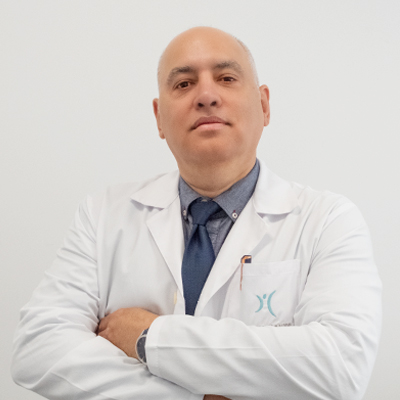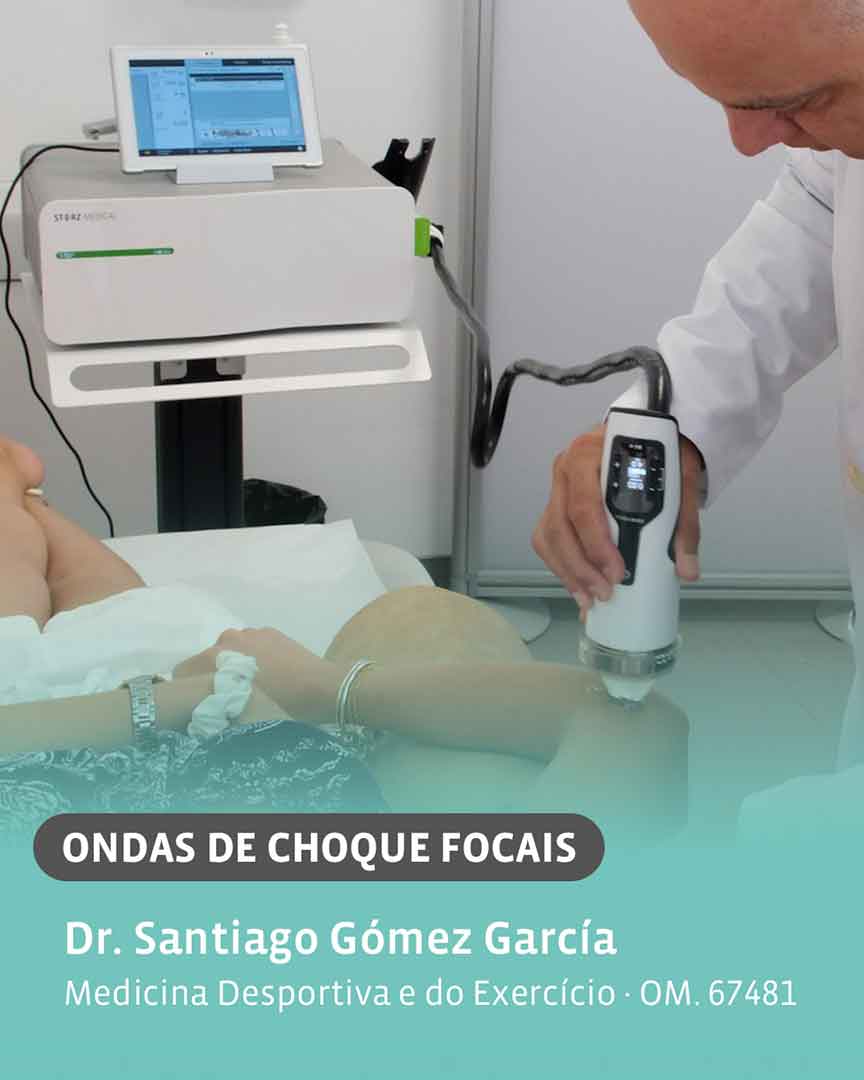As part of the recovery process from musculoskeletal or overuse injuries, patients may benefit from complementary therapeutic technologies such as Focused Shockwave Therapy. This non-invasive and targeted technique uses high-intensity acoustic pulses, precisely directed at injured areas, to promote tissue regeneration, relieve pain, and accelerate healing. It is particularly effective in treating conditions such as tendinitis, plantar fasciitis, or calcifications.
Benefits of Focused Shockwave Therapy
The main benefits of extracorporeal Focused Shockwave Therapy include pain relief, restoration of mobility, tissue stimulation and repair, reduced inflammation, and the potential to avoid surgery or corticosteroid injections. Furthermore, this treatment can significantly accelerate the recovery process from various injuries.
What is a Shockwave?
A shockwave is an acoustic pulse of very short duration (rise time of less than 10 μs), generated by a rapid increase in pressure that reaches extremely high levels, known as the maximum or peak pressure, which can reach up to 500 bar (10 to 100 MPa). This is followed by a gradual return to baseline, passing through a negative pressure phase (sub-atmospheric), which corresponds to approximately 10% to 20% of the maximum pressure (Pmax).
Therapeutic Shockwave Generators
For therapeutic purposes, there are several types of Focused Acoustic Shockwave generators:
Electrohydraulic source: uses a spark plug immersed in a fluid medium. When a high-voltage electric current passes through, it creates a plasma bubble that expands spherically, generating the shockwave.
Piezoelectric source: activates hundreds of piezoelectric elements arranged in a spherical tray simultaneously, producing spherical waves that self-focus at the treatment point.
Electromagnetic source: uses an electric coil to generate two magnetic fields with opposite polarities. The coil may be flat or cylindrical, depending on the equipment.
In contrast, there are Radial Pressure Waves (RSWT) — often mistakenly referred to as "shockwaves". These are pneumatic pressure waves in which the maximum energy is released at the end of the transmitter (focus). The energy generated by the projectile is transferred to the applicator head, which conducts it in the form of mechanical waves to the treatment area. The main difference lies in the fact that radial waves cannot be focused in depth, thus limiting their effect to more superficial tissue layers.
Indications for Extracorporeal Shockwave Therapy
The International Society for Medical Shockwave Treatment (ISMST) classifies the indications for extracorporeal shockwave therapy into four groups:
Standard Indications
There is strong scientific evidence supporting the use of shockwave therapy for the following conditions:
Chronic tendinopathies: Calcific Tendinopathy of the Shoulder, Plantar Fasciopathy, Lateral Epicondylitis (Tennis Elbow), Greater Trochanteric Pain Syndrome, Patellar Tendinopathy and Achilles Tendinopathy.
Bone conditions: Delayed Union, Pseudarthrosis, Stress Fractures, Avascular Osteonecrosis, and Osteochondritis Dissecans (without joint involvement).
Skin conditions: Chronic or non-healing wounds, Skin Ulcers, Non-circumferential Burns, and Cellulite.
Prerequisites for the Use of Extracorporeal Shockwave Therapy
To avoid inappropriate treatment, it is essential to meet minimum prerequisites and conduct appropriate diagnostic evaluations. A thorough clinical examination is required, complemented by imaging studies. When necessary, neurological assessments, laboratory tests and/or other diagnostic procedures should also be requested to confirm the diagnosis.
It is equally important to consider the depth of penetration of the shockwave source when treating deep tissue structures.
Dr. Santiago Gómez García
Sports and Exercise Medicine
OM: 67481










